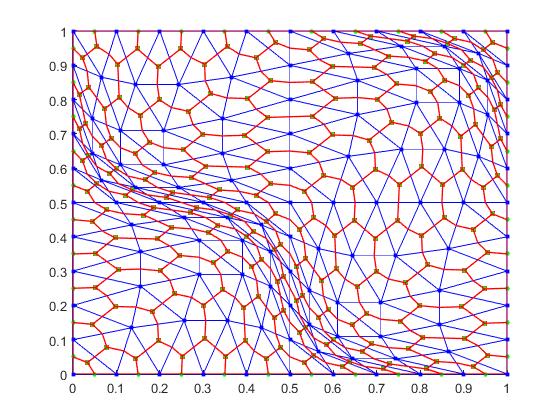The EUROS Workpackage Wind farm wake effects in a nutshell
The wind turbines in offshore wind farms are currently modelled by using actuator methods. In these methods the presence of the turbines is modelled by an extra force term in the Navier-Stokes momentum equation. This way of modelling the turbines is computationally far less expensive than the use of a body-fitted mesh, but also significantly less accurate because of the indirect way in which the geometry of the turbines is modelled.
In a new approach we will model the turbines by the cut-cell technique. In this approach only one mesh is used and the turbines are immersed in this mesh. As the geometry of a turbine does not align with the mesh, mesh-cells near the boundary of turbine need to be adjusted to conform to the geometry of the turbine and the discretization of the Navier-Stokes equations needs to be adjusted as well. The cut-cell method is anticipated to be significantly more accurate than the actuator methods while still far less computationally expensive than the body-fitted approach.
To model the flow in the wind farm a staggered discretization will be used that conserves mass, momentum and energy. In the cut-cells neighboring the turbines, the staggered discretization will be adjusted so that the resulting method still conserves mass, momentum and energy. This will be done by using a so-called mimetic discretization method based on a dual mesh complex. An example of a dual mesh is shown in the figure.

2017 |
Mimetic Staggered Discretization of Incompressible Navier–Stokes for Barycentric Dual Mesh Inproceedings Cancès, Clément; Omnes, Pascal (Ed.): Finite Volumes for Complex Applications VIII - Hyperbolic, Elliptic and Parabolic Problems, pp. 467–475, Springer, 2017. |


